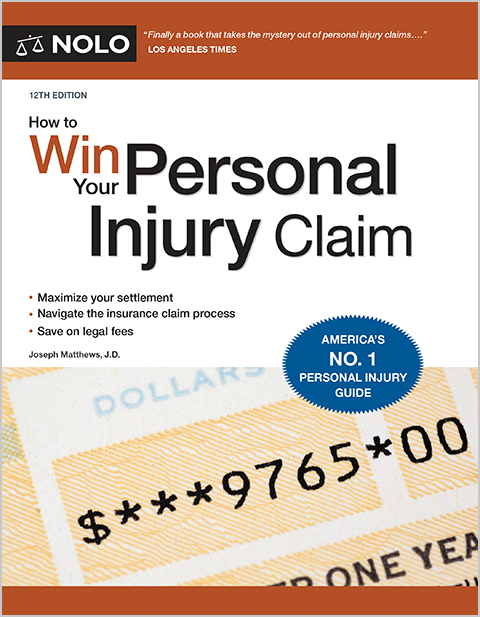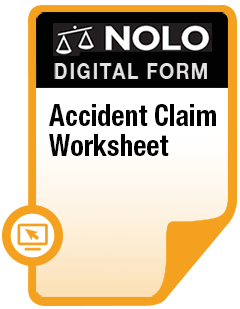Learn about the injuries associated with silica exposure, the legal claims you can bring, and the kinds of damages that might be available to compensate you.
Silica is a compound formed by combining oxygen—the most abundant element in Earth's crust—and silicon, the second most abundant element. Under intense heat and pressure over time, silica crystallizes into rocks, quartz in particular. It also can be found in other kinds of rocks and in the soil.
By itself, silica is harmless. It becomes a potential human health hazard when it's crushed, blasted, ground, cut, or polished. Those processes produce respirable crystalline silica (silica dust), microscopic silica particles about 1/100th the size of a grain of sand. Once airborne, silica dust is readily inhaled or ingested. Inside the body, silica dust particles can remain indefinitely, causing a variety of serious illnesses that sometimes lead to death.
Silica has lots of industrial and consumer uses. But it also has a long and well-documented history of causing tens of thousands of injuries and fatalities. We begin by explaining the common uses of silica, the industries where most workers are exposed to silica dust, and the diseases associated with it. From there, we'll examine the legal claims typically raised in silica injury lawsuits, along with the kinds of damages you can recover in a successful silica injury case.
Silica: How It's Used and Risks of Exposure
It's no exaggeration to say that silica can be found and is used almost everywhere. Gold, silver, copper, clay, cement, zinc, silicon, and lithium are just a few of the dozens of commodities that contain silica. Left undisturbed, the silica in most of these products won't cause harm. But regular exposures to large quantities of silica dust can lead to health problems.
Products That Contain Silica
Here's a (very) partial list of products and applications where silica can be found:
- asphalt
- bricks
- cleansers
- cosmetics
- fill dirt
- foam (in furniture cushions)
- jewelry
- mortar
- paper
- paint
- pet litter
- plaster
- plastics, and
- water filters
Who's Regularly Exposed to Silica Dust?
The Occupational Safety and Health Administration (OSHA) estimates that every year in the United States, about 2.3 million workers are exposed to silica on the job. Workers who cut, grind, polish, and crush silica-containing products, and those who work in areas where those activities regularly take place, are at the greatest risk of silica-related illness.
The list includes:
- miners—blasting, drilling, crushing, and transporting rocks and ore
- concrete workers—use cement, crushed rocks, and mortar to make concrete
- construction workers—cutting, grinding, and crushing cement, bricks, and mortar
- glass manufacturing workers—handling natural and synthetic silica-based materials to make glass
- demolition workers—cutting, crushing, grinding, and moving debris consisting of cement, cinder blocks, bricks, and mortar
- sandblasters—using sand and silica-based materials to clean and polish surfaces
- ceramics workers—mixing and firing silica-containing ceramics, and
- stone workers—cutting, crushing, and grinding stone for industrial and consumer uses.
Health Hazards Associated With Silica
Medicine has long known about the potential dangers of silica dust exposure. In 1700, Dr. Bernardino Ramazzini, known as the "father of occupational medicine," found that stone cutters showed evidence of the disease we today call silicosis.
In the United States, the health hazards associated with silica first gained national prominence as a result of the 1930s Hawk's Nest Tunnel Disaster. Out of about 5,000 workers who built the Hawk's Nest Tunnel in Summersville, West Virginia, more than 750 died of silicosis. Another 1,500 workers later developed lung disease. Owing largely to the publicity generated by congressional hearings, most states later added silica-related illness to the occupational diseases compensable under their workers' compensation laws.
Silica-Related Illnesses
Today, several illnesses are known to be caused by, or are associated with, exposure to silica. These include:
- silicosis
- chronic obstructive pulmonary disease (COPD)
- lung cancer
- kidney disease
- autoimmune disease, and
- lung infections, including tuberculosis.
Silicosis
By far, the most common silica-related illness is silicosis, fibrous scarring of the lungs caused by inhaling silica dust. Silicosis is a progressive, incurable disease that often ends in death. There are three main types of silicosis: Acute, accelerated, and chronic.
Acute silicosis. Caused by inhaling very large amounts of silica dust over a short time span, symptoms of acute silicosis develop rapidly in as little as a few months after exposure. Acute silicosis tends to progress aggressively and rapidly.
Accelerated silicosis. Typically appearing within 5 to 10 years after exposure, accelerated silicosis—as the name suggests—appears and progresses more quickly than the most common version of the disease, chronic silicosis.
Chronic silicosis. Symptoms of chronic silicosis generally begin to show up 15 to 20 years after exposure. The symptoms can mimic other, more routine illnesses such as bacterial or viral infections. A chest X-ray and other tests might be needed to make a definitive diagnosis.
Chronic Obstructive Pulmonary Disease (COPD)
COPD is the term often used to describe other types of obstructive airway disease, including emphysema and chronic bronchitis. The chronic inflammation associated with bronchitis is known to result from silica-related airway obstruction.
Lung Cancer
Silica is classified as a known human carcinogen, or cancer-causing agent. In those exposed to silica dust, lung cancer sometimes develops on its own, or it might follow the onset of silicosis. Lung cancer can spread to other parts of the body. While treatments are available, most cases are fatal.
Kidney Disease
Patients being treated for silicosis sometimes develop chronic kidney disease (CKD), a condition where kidney function is lessened or impaired. By itself, CKD can be manageable. But in combination with other silica-related diseases, CKD is likely to complicate treatment of the patient's underlying conditions.
Autoimmune Disease
Silica-related disease is correlated with several autoimmune disorders, including scleroderma, lupus, and rheumatoid arthritis. On their own, these conditions are serious. The combination of silicosis and autoimmune disease generally leads to a poor prognosis.
Lung Infections
Silicosis patients have a roughly 30-times increased risk of developing tuberculosis compared to patients without silicosis. Those who were exposed to silica but who don't have silicosis are still at increased risk, with a three times greater rate of tuberculosis. Other lung infections are common, too.
Legal Claims in Silica-Related Lawsuits
Most silica-related lawsuits are product liability cases. They usually involve one or more of these legal claims:
- negligence
- strict liability, and
- breach of warranty.
Negligence
Negligence is the failure to be as careful as required by the circumstances. Product liability cases often include claims for negligent design or manufacture and negligent failure to warn.
Suppose a bricklayer routinely cut and ground bricks and worked with mortar products, generating large amounts of silica dust. Later, the worker developed chronic silicosis. The worker might sue the makers of the bricks and mortar, alleging they negligently failed to warn workers and their employers about the dangers of working with and inhaling silica dust.
The worker also might go after the owners of the job sites where they worked, claiming the owners negligently failed to adhere to OSHA safety standards for silica-based products, or negligently failed to implement dust mitigation and safety strategies.
Strict Liability
When a product is defective and unreasonably dangerous, those who are injured by it can sue the manufacturer using a legal theory known as strict liability. In a strict liability claim, the injured person doesn't have to prove that the product manufacturer was negligent. They need only show that the product was defective, they used it as it was intended to be used, and they were injured.
Suppose a worker used a respirator to protect against inhaling silica dust, but the respirator was defective and didn't work as it should. The worker later developed silicosis. In a strict liability lawsuit against the manufacturer, the worker could claim that they used the product as instructed, but it was defective and failed to provide the promised protection.
Breach of Warranty
"Warranty" is just a fancy legal term for a promise or guarantee. When a product manufacturer sells a product, it typically warrants that the product will perform in a certain way for a certain length of time. If the product doesn't work as guaranteed, the manufacturer has breached the warranty.
Warranties can be:
- expressed, meaning the manufacturer explicitly promises a certain level of performance, or
- implied by law, meaning the law implies a certain level of performance regardless of what the manufacturer says (or doesn't say).
Return to our example involving the respirator. Because the product was defective and didn't provide the promised degree of safety, the respirator manufacturer breached its warranty and can be held legally responsible for damages.
Filing a Silica Injury Claim or Lawsuit
If you've been injured by prolonged exposure to silica dust, you might be considering a claim or a lawsuit to recover compensation ("damages") for your injuries. Because you probably were injured on the job, you might have a couple of options.
Claim Options
First, you can file a workers' compensation claim against your employer. Workers' compensation typically covers both on-the-job injuries from things like car accidents and falls, and occupational diseases related to the worker's employment. As a rule, benefits include medical care and treatment, temporary disability income while you're off work, and benefits for permanent disability.
Second, you can file a product liability claim or a lawsuit against third parties like job site owners, product manufacturers, and others. Product liability cases are notoriously complex and difficult so if you decide to bring a case, give serious thought to hiring an experienced product liability lawyer to represent you.
Damages in a Silica Injury Case
If you're successful with a silica-related product liability claim or lawsuit, you'll recover what the law calls "compensatory damages." They're meant to compensate you for:
- your economic losses, and
- your noneconomic losses.
Economic Losses
Economic losses include those for which you (or your insurer) pay or lose out of pocket. Typical examples include:
- medical, hospital, surgical, and therapy bills
- lost wages and benefits, and
- amounts you pay for replacement household services such as lawn care and housekeeping.
Noneconomic Losses
Noneconomic losses are those that don't cost you directly out of your pocket. Here are some common examples:
- pain and suffering
- emotional distress
- lost enjoyment of life, and
- disability.
How Much Is Your Silica Injury Case Worth?
Look online and you'll find silica injury settlements and verdicts ranging from the tens of thousands into the millions. But if you're expecting a seven- or eight-figure payday, odds are you'll come away disappointed. Most of those results are outliers.
The value of your silica injury claim, as with all legal claims, depends on the case facts. Key factors include the length and severity of your exposure and the nature and extent of your silica-related injuries. The longer you were in harm's way and the more serious and disabling your injuries, the greater the likely value of your case.
Get Help With Your Silica Injury Case
The best way to get an estimate of your case value is by speaking to an experienced silica claims lawyer. This is someone who's familiar with silica injury claims like yours, and who knows how they're valued based on the facts. Your best chance of success, and of maximizing the value of your claim, will come from having experienced legal counsel on your side.
When you're ready to move forward, here's how to find a lawyer who's right for you.


